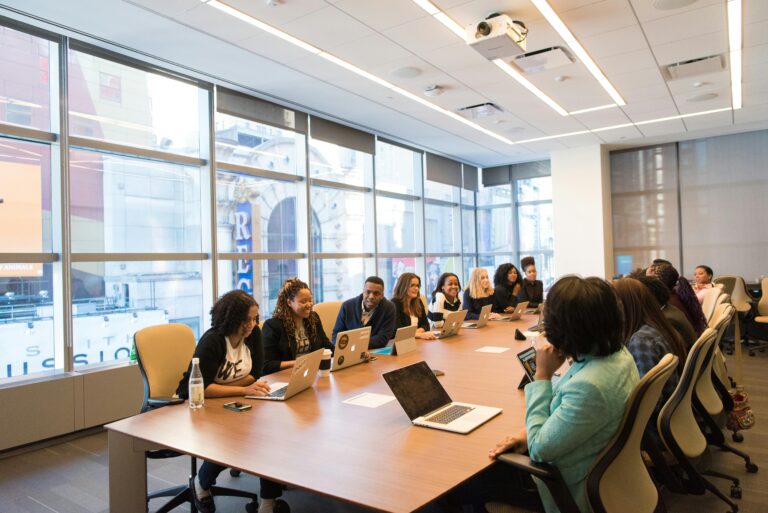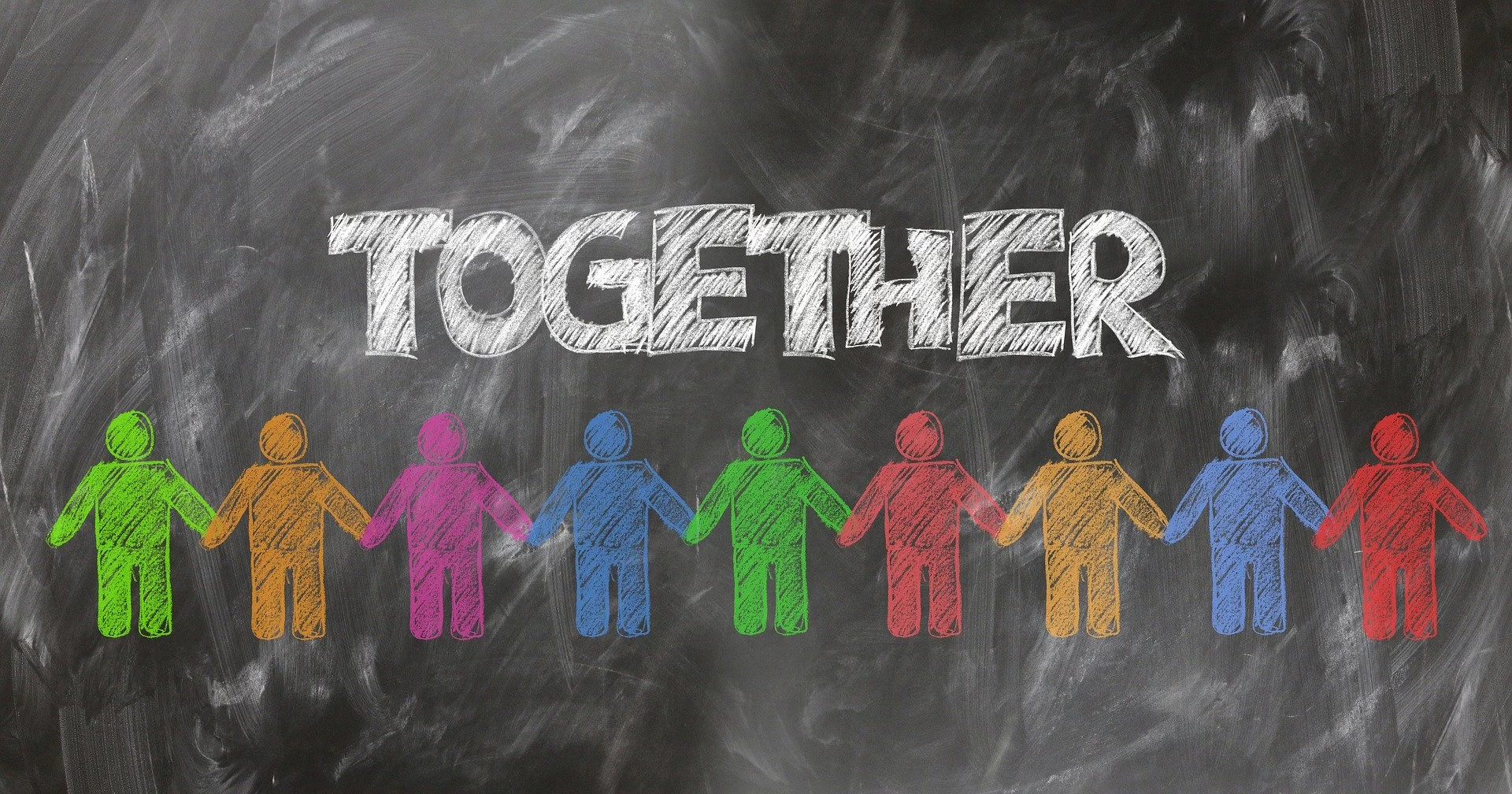Today’s hybrid and remote workplace structures have dramatically changed the communication dynamics of the prevailing pre-2020 “everyone in the office every day” model. While the increased flexibility has many benefits for businesses and their employees alike, remote work has also introduced communication challenges.
Workers and bosses are recognizing the value of face-to-face communication, at least on a periodic or part-time basis. High-performing organizations are taking steps to maintain flexibility in their workplace structure while balancing that with the in-person communication crucial for effective collaboration and leadership.
Here’s a look at why face-to-face interaction is so important and how companies can make it happen effectively without losing the benefits of a hybrid workplace.
Five Advantages of Face-to-Face Communication in the Workplace
While online meetings are suitable for sharing information or coordinating team efforts, they lack the immediacy and spontaneity of in-person interaction. Humans are “wired” for face-to-face communications, where we can read all of the nonverbal cues that add vital context to conversations.
“When teams come together in person, these moments carry heightened strategic importance. Face-to-face interactions have become more valuable and impactful due to the purpose and intent behind them. Organizations…are finding that well-designed in-person experiences yield exceptional returns in terms of team alignment, motivation, and business outcomes.”1
Here are five reasons why face-to-face communication remains critical in the workplace, particularly in the era of hybrid and remote work models.
1. Builds Trust and Emotional Connection
One of the most substantial advantages of face-to-face communication is its ability to build trust. In-person conversations enable employees to connect more authentically by picking up on tone, body language, and subtle cues that may not always be apparent on a screen. These small but powerful interactions lay the groundwork for stronger rapport.
Physical presence also fosters empathy and emotional connection, helping coworkers better understand each other’s perspectives and challenges. Over time, these moments of human connection strengthen team loyalty and create a sense of belonging that’s virtually impossible (pardon the pun) to replicate in digital-only interactions. Trust and empathy are the cornerstones of high-performing teams.
“When teams share physical space, even periodically, they build stronger bonds, develop deeper trust, and align more effectively with organizational goals. These moments of connection create lasting impacts that resonate long after teams return to their individual locations.”1
2. Improves Clarity Through Nonverbal Cues
Face-to-face communication adds layers of meaning that go beyond words. Tone of voice, eye contact, and body language all help clarify intent and reduce the risk of misinterpretation. These cues can prevent minor misunderstandings from escalating into bigger issues.
In-person interaction also provides context that digital messages often lack. A brief email or chat message may seem curt or unclear, but when paired with nonverbal signals, the meaning becomes obvious. By combining verbal and non-verbal communication, teams can share ideas more accurately and maintain stronger, more collaborative relationships.
3. Enables Faster and More Productive Collaboration
Spontaneous face-to-face conversations can often lead to quicker and more effective decision-making and problem-solving. Feedback, questions, and approvals can be processed immediately with an in-person conversation.
Real-time interaction enables teams to resolve issues without the delays associated with back-and-forth messaging. It’s much mentally easier, and far faster, to process a series of questions and answers within a face-to-face discussion than through an asynchronous series of email or Slack messages.
“Harvard Business Review research revealed that 79% of professionals find in-person meetings more effective for team building compared to virtual alternatives. The power of physical presence becomes even more striking when you consider that face-to-face requests are 34 times more effective than emailed ones.”1
4. Improves Business Innovation and Performance
“The impact of in-person interaction on business innovation and performance is substantial. MIT researchers found that even a 25% reduction in face-to-face meetings can reduce innovation metrics, such as patent citations, by 8%. Clearly, physical proximity among team members creates an environment where breakthrough thinking thrives and creative problem-solving accelerates.”1
That makes sense. New product development, advertising campaign design, and other creative processes flow more naturally and effectively when teams can “bounce ideas around” in an in-person setting.
5. Increases Employee Engagement and Retention
Ordering everyone back to the office full-time isn’t the best approach. Employees want flexibility in their work schedule, but also recognize the value of face-to-face communication at work at least part of the time.
“A recent Gallup poll found that six in 10 employees with remote-capable jobs prefer a hybrid work arrangement.”2 Working remotely is ideal when tackling mentally intensive solo tasks. But even workers who could work remotely full-time value the visibility and ease of collaboration for group efforts. Providing employees with this flexibility keeps them more engaged with coworkers and less likely to look for greener pastures elsewhere.
Drawbacks of a Fully Remote Workplace
Fully remote teams can suffer from weakened team cohesion due to their lack of informal, spontaneous conversations; limited networking, particularly with coworkers in other functions or departments; and weaker workplace relationships.
“Building relationships takes planning and effort when your team is scattered across time zones. This (fully remote work) also means fewer organic moments to mentor or foster connections that can help your teams succeed.”2
Digital-only communication increases the risk of misunderstandings and delays in feedback loops. The lack of face-to-face communication and its attendant non-verbal communication signals make skill building, mentorship, and team collaboration more challenging.
“Symbiotic learning doesn’t happen over Zoom. Leaders can find it tough to mentor junior employees or share those game-changing ‘watch and learn’ moments. With more employees working remotely, younger professionals may struggle to develop key business skills.”2
The prolonged isolation of fully remote work can also negatively impact employee morale, motivation, and sense of belonging. This can increase feelings of loneliness at work and make it much more challenging to form constructive work friendships.
Finally, fully remote work environments may limit peer learning and organic professional development, as well as associated career visibility and opportunities for advancement.
“Out of sight, out of mind? Employees working remotely may find it more challenging to gain visibility with leadership, which can reduce their chances of promotions or key project opportunities. This lack of in-person engagement could create a career bottleneck.”2
Team building programs can help combat these drawbacks. Periodic in-person fun competitions and bonding activities, such as a Go-Kart Competition, Race Car Rally, or Food Truck Face-Off, are ideal for strengthening bonds and enhancing communication with colleagues. However, between face-to-face gatherings, virtual team building exercises like Virtual Code Breakers and our virtual escape rooms build relationships and collaborative problem-solving skills in fun and engaging ways.
Limitations of a Fully In-Office Workplace
The flip side of fully remote work—a fully in-office workplace structure—raises its own set of challenges. Mandatory in-office policies can reduce flexibility, increase commute-related stress, and negatively impact work–life balance. Full-time in-the-office policies are toughest on young parents (who most need the flexibility of hybrid work), employees with long commutes (for obvious reasons), and employees with mobility issues.
Forcing employees who have proven their effectiveness in remote settings back to the office runs the risk of alienating them. These employees, often high performers, may resent having to return to in-person work full-time after having grown accustomed to, and demonstrated their ability to thrive with, remote work.
Additionally, full-time in-office work may limit access to a more diverse and geographically distributed talent pool. When a company’s universe of potential job candidates is limited to people within driving distance of the office, it foregoes the opportunity to search for potentially more highly qualified candidates outside the city, state, or even country.
Team building programs can help combat these limitations by bringing people together in a fun, low-stress environment outside the workplace. Engaging in in-person team building activities, such as the television game show-inspired A Minute to Win It!, a high-tech scavenger hunt like our City SmartHunt®, or a charitable program like our Mini-Golf Build and Food Donation, fosters camaraderie, collaboration, and positive shared memories.
The Value of Flexibility in Today’s Work Models
Hybrid models give employees autonomy to choose when to work in-person or remotely, promoting both personal well-being and focused productivity. As we noted in a previous post about hybrid work here, “Study after study identifies flexibility as one of the most critical factors for increasing employee engagement…Flexibility improves work-life balance, decreases stress, and increases overall satisfaction.”
Combining face-to-face days with remote flexibility helps teams build rapport, reinforce trust, and collaborate more meaningfully during in-person sessions. Employees have control over when to work in the office with teammates on collaborative tasks, or work remotely on more thought-intensive efforts, or because they need flexibility to address child care, car repair, or other non-work life issues.
Balanced work models contribute to improved retention, increased engagement, and reduced burnout rates. Studies show that roughly two-thirds of employees prefer a hybrid work structure; 25% say they would quit if forced to work in the office full-time; and remote-friendly companies experience 33% lower turnover rates than their full-time, in-the-office peer organizations.
Benefits of Hybrid Workplaces
A hybrid work environment provides employees with the flexibility to work remotely while also facilitating face-to-face interactions for collaboration and connection. Teams can schedule in-person time when it’s most impactful, like during brainstorming sessions, onboarding, or strategic planning.
Hybrid models boost employee satisfaction and widen talent pools by accommodating diverse work styles. According to Future Forum, “80% of all knowledge workers now want flexibility in where they work.” A mixed in-person-and-remote structure makes it easier to accommodate non-traditional workers, such as individuals pursuing a graduate degree or highly skilled young moms not ready to return to the workforce full-time.
Hybrid environments mitigate the downsides of both fully remote (isolation and disengagement) and fully in-office (high stress and dissatisfaction) setups, thereby supporting long-term engagement and performance. When employees are given some degree of flexibility and control, they are more invested in the job, more loyal, and happier.
The Role of Team Building and Professional Development in Face-to-Face Gatherings
Structured team building events strengthen communication, trust, and cross-functional collaboration, regardless of whether your company is hybrid, fully remote, or entirely in-person. They provide opportunities to strengthen “people skills” such as communication, collaboration, leadership, and problem-solving through fun, engaging, and stress-free activities.
Particularly in environments where not all employees are together in person all the time, team building and professional development programs help make the most of those occasions when everyone comes together. These activities go beyond informal social gatherings; they combine fun with a real business purpose.
Explore all of the options Best Corporate Events offers to bring teams together in person to strengthen communication, build trust, and reinforce collaborative skills—from corporate scavenger hunts to professional development workshops, engaging team building activities, interactive games, and impactful charitable corporate social responsibility events. Start a conversation with one of our expert program advisors to explore options and customization opportunities to meet your specific goals.
Sources:






